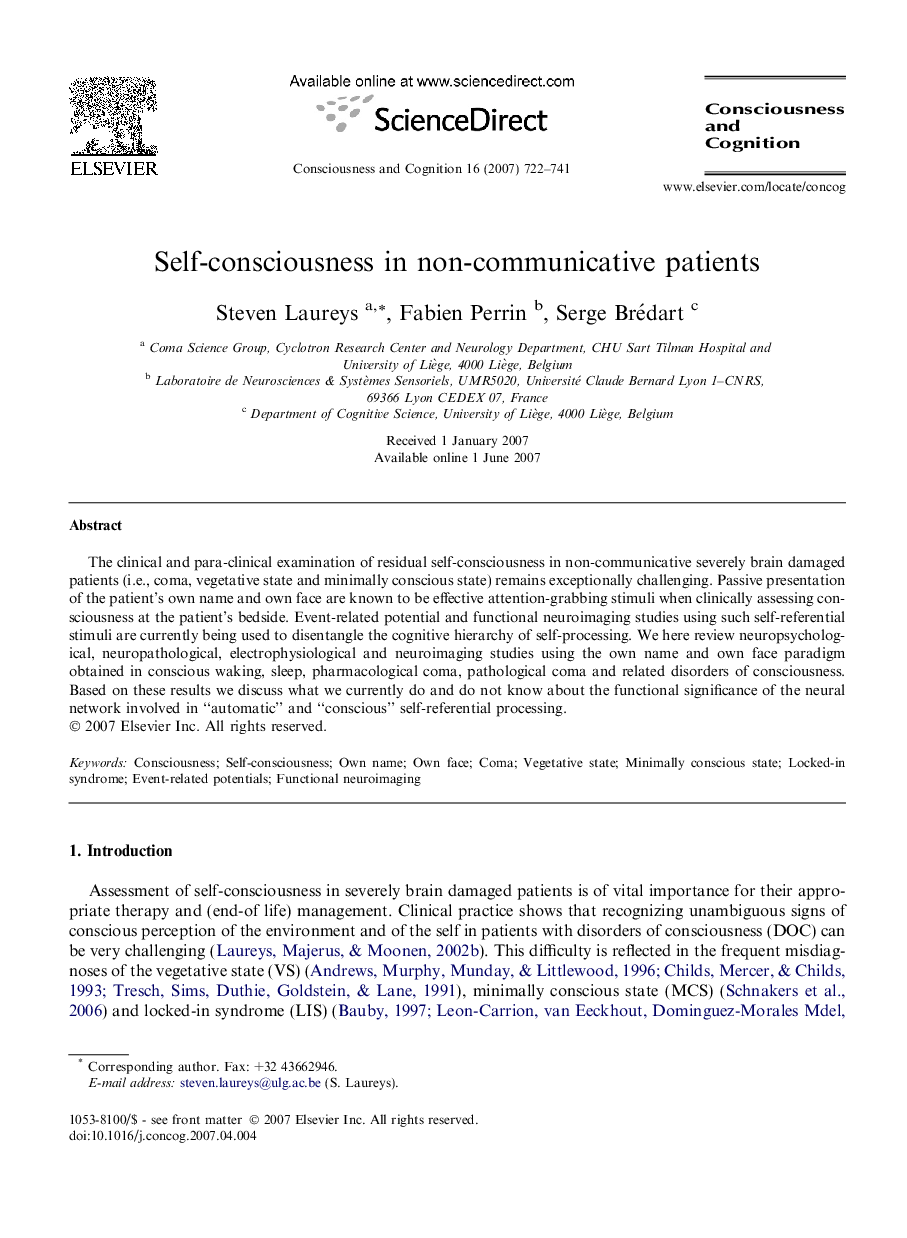| Article ID | Journal | Published Year | Pages | File Type |
|---|---|---|---|---|
| 927780 | Consciousness and Cognition | 2007 | 20 Pages |
The clinical and para-clinical examination of residual self-consciousness in non-communicative severely brain damaged patients (i.e., coma, vegetative state and minimally conscious state) remains exceptionally challenging. Passive presentation of the patient’s own name and own face are known to be effective attention-grabbing stimuli when clinically assessing consciousness at the patient’s bedside. Event-related potential and functional neuroimaging studies using such self-referential stimuli are currently being used to disentangle the cognitive hierarchy of self-processing. We here review neuropsychological, neuropathological, electrophysiological and neuroimaging studies using the own name and own face paradigm obtained in conscious waking, sleep, pharmacological coma, pathological coma and related disorders of consciousness. Based on these results we discuss what we currently do and do not know about the functional significance of the neural network involved in “automatic” and “conscious” self-referential processing.
